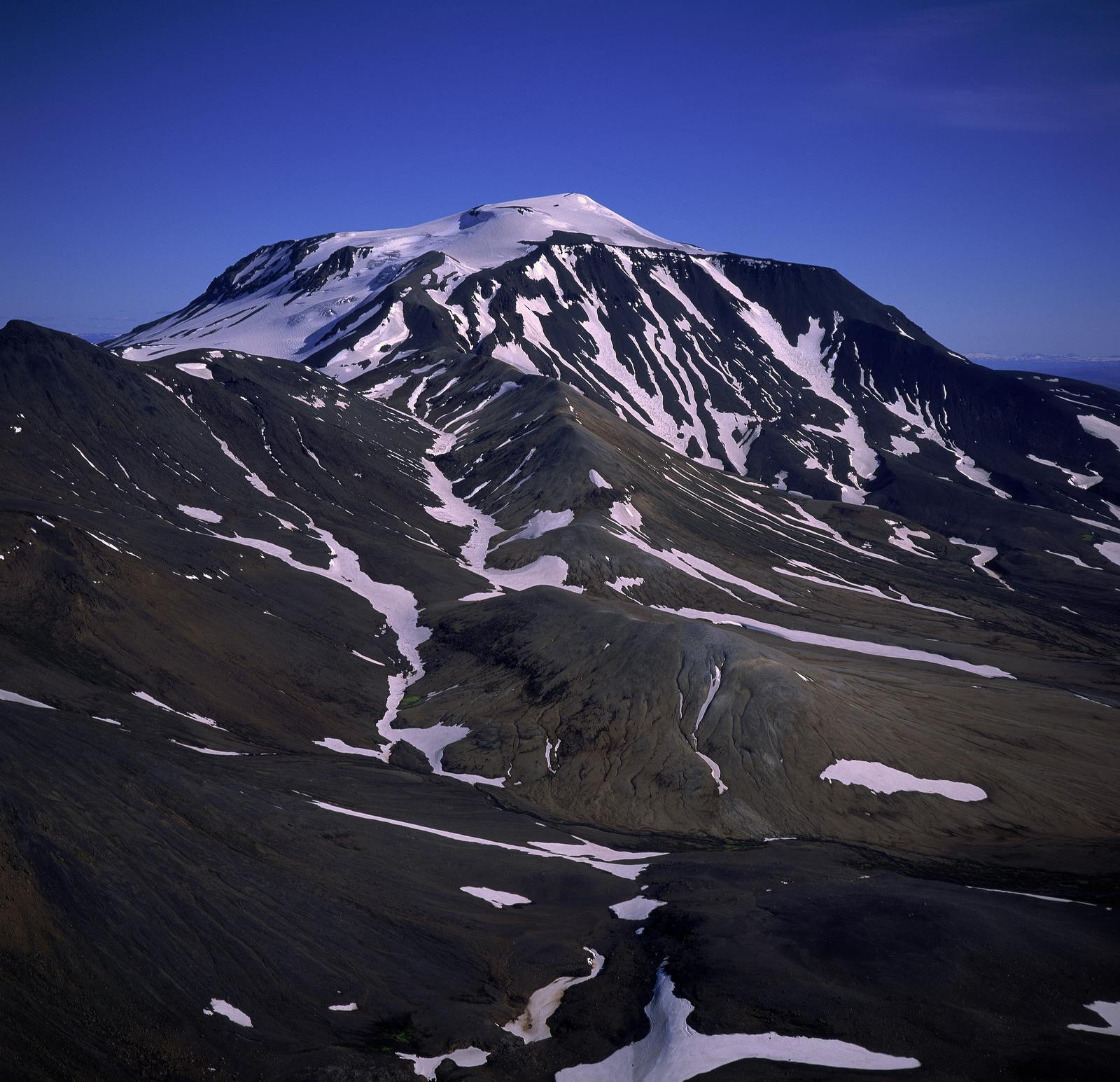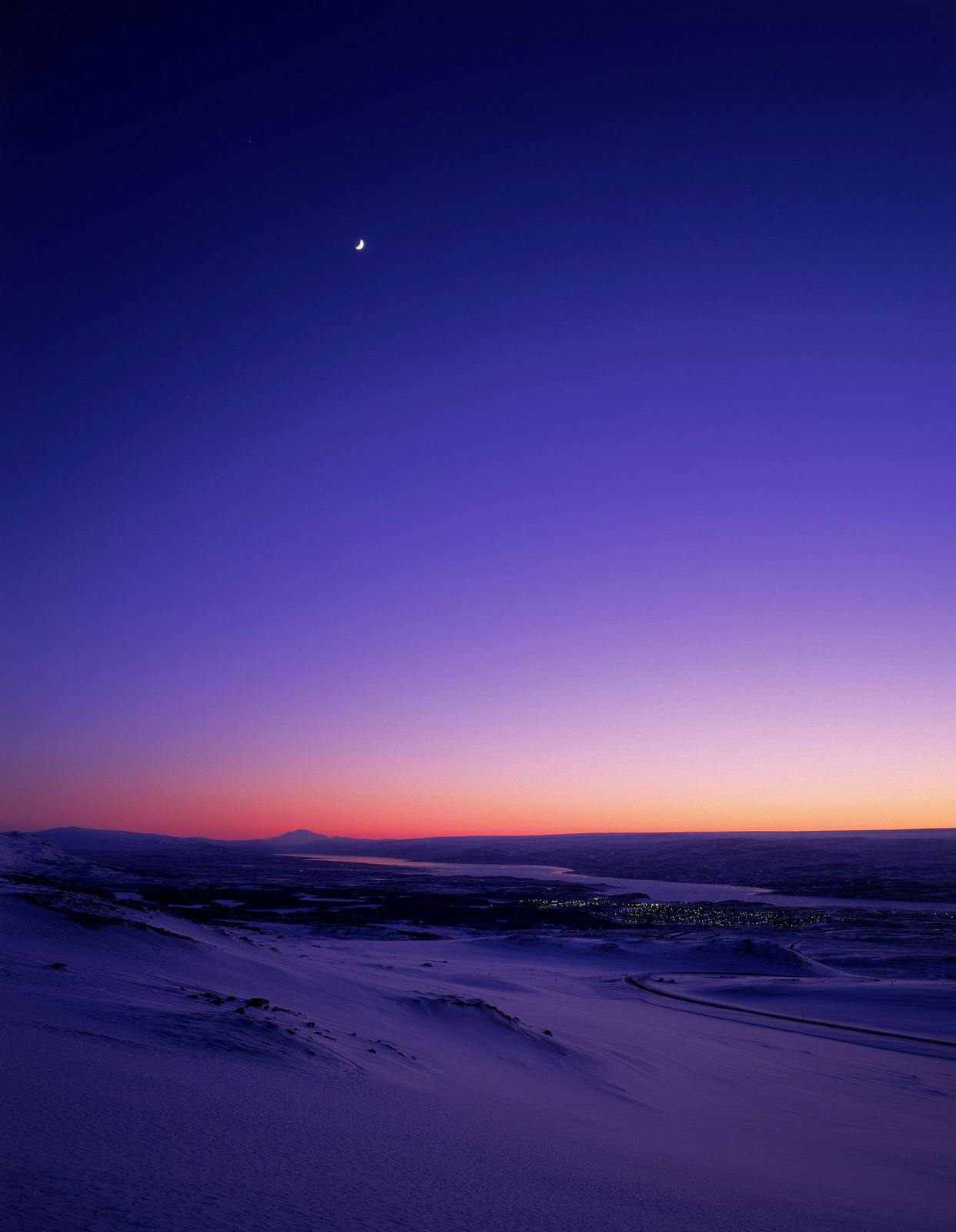
Snæfell Mountain in East Iceland
An ancient central volcano dominates the remote highlands of East Iceland. Snæfell, the highest freestanding mountain in the country, commands the surrounding plateau within the Vatnajökull National Park. Its slopes serve as a gateway to challenging highland hikes, abundant wildlife, and one of Iceland’s most unspoiled wilderness areas.
What is Snæfell?
Known as the Queen of the East, Snæfell clocks in at a towering height of 6,014 feet (1,833 meters). While it is the fourth-tallest peak in Iceland overall, its true distinction lies in being the highest mountain not covered by the enormous Vatnajökull glacier. The rewards at the summit are immense: sweeping views of its own vast ice fields, the glimmering Eastfjords, and the verdant oasis of Eyjabakkar below.
Snæfell translates to “Snow Mountain,” making it a popular name in the country’s glacier-rich terrain. Just remember not to confuse it with other Icelandic volcanoes and mountains that share its name.

Snæfell in Vatnajökull National Park
Snæfell is the crowning peak of the Snæfellsöræfi plateau, rising from the remote northeastern highlands of Iceland within the vast Vatnajökull National Park. Unlike the glacier-capped volcanoes beneath the ice sheet farther west, Snæfell stands largely apart. It’s an independent central volcano capped by a small dome-shaped ice cap and a few shrinking glacier tongues.
Set near the meeting point of the eastern highlands and the Eastfjords, the Snæfellsöræfi plateau forms a natural transition zone between glacier country and coastal landscapes. The area also features lush vegetation and rich wildlife, a rarity in Iceland’s often barren highlands.
How to Get There
The easiest approach to Snæfell is from the town of Egilsstaðir. From here, the drive covers roughly 58 miles (93 kilometres), going from paved roads before turning onto rugged mountain tracks.
Access to the mountain base requires a 4x4 vehicle. The area is reached via the high-clearance F-roads (F909 and F910), leading to the Snæfellsskáli Mountain Hut. The mountain road is typically open only during the summer months (usually late June to early September).

Geology of Snæfell
Snæfell is a stratovolcano that formed mainly during the Ice Age. Eruptions beneath the thick ice cover helped its massive structure. The mountain’s last major eruption is estimated to have occurred over 10,000 years ago. Since volcanoes in this region can have incredibly long quiet periods, some experts believe Snæfell is simply dormant (sleeping), rather than truly extinct.
The mountain’s summit is capped by a small perennial ice cap that lends the mountain its name, “Snow Mountain.” This striking ice cap is not part of the huge Vatnajökull glacier to the south. Rather, it is a freestanding feature composed of several small glaciers like Sveinsjökull and Axlarjökull.
To learn more about the geological processes that created mountains like this, consider visiting the Perlan Museum in Reykjavík. There, you can explore the Forces of Nature exhibition, which vividly demonstrates Iceland's volcanic and glacial might.
Hiking Snæfell: Access and Trails
The ascent of Snæfell rewards travellers with a stunning panorama of the surrounding highlands and the Vatnajökull glacier. Many excursions begin at the Snæfellsskáli hut, located on the Snæfellsöræfi plateau. The main route extends about 3.8 miles (6.2 kilometres) one way from the car park to the summit. Estimated time for the full ascent (and return) is around four to seven hours, depending on conditions and fitness.
Be prepared; this is a strenuous trail. It involves significant elevation gain, sections of loose rock and scree, and crosses glacier terrain near the summit. Crampons and a GPS device are strongly advised.
For a less demanding outing, shorter alternative trails explore the gentler foothills of the mountain. You can also use Snæfell as a junction point for longer high-country treks across the Snæfellsöræfi plateau.
Safety, Facilities, and Ranger Services in the Highlands
Serious preparation for exploring Snæfell is crucial, as weather and terrain can change drastically and quickly. The main facility is the Snæfellsskáli mountain hut, which serves as the key base for hikers and a ranger station. However, remember to bring all your supplies.
During summer, park rangers patrol the region, provide trail information, manage the campsite, and handle safety issues. It is strongly recommended to inform the hut rangers of your route and schedule before setting out.

Wildlife and Nature on the Snæfellsöræfi Plateau
The Snæfellsöræfi Plateau is one of the best places in Iceland to see wild reindeer herds roaming freely across the highlands. Reindeer are found only in East Iceland, and these open plains are their favourite summer grazing grounds. In winter, the herds migrate toward the coast.
The plateau’s mix of volcanic terrain, glacial rivers, and surprisingly lush vegetation also supports abundant birdlife and hardy alpine plants. In summer, Snæfell truly comes alive with Iceland’s wild beauty.
Best Time to Visit Snæfell: Summer vs. Winter
The perfect time to visit Snæfell largely depends on the traveller and the experience they seek.
Like the rest of Iceland, summer (June–August) offers the friendliest conditions: roads open, hiking trails free of deep snow, and long daylight hours, courtesy of the midnight sun. This is the best time for hiking and wildlife viewing, particularly spotting wild reindeer herds.
At the same time, there’s something alluring about seeing winter transform the mountain into a stark, isolated wilderness. Access is much more difficult, reserved for highly experienced mountaineers or travellers with specialised vehicles. But the darkness and the remote Snæfell area create excellent conditions for catching the Northern Lights.
Nearby Attractions in East Iceland and Vatnajökull National Park
The Snæfell region is an excellent starting point for exploring East Iceland and Vatnajökull National Park’s northern reaches.
- Laugarfell Hot Springs: Located just north of Snæfell, Laugarfell is a popular base camp. Its main draw is the two natural hot springs with mineral-rich water. A soak is the perfect way to unwind after a day of high-country hiking!
- Lagarfljót Lake and Forest: Located near Egilsstaðir, this lake is the legendary home of the Lagarfljótsormur, Iceland's equivalent of the Loch Ness Monster. Nearby Hallormsstaðaskógur is Iceland’s largest national forest, with forest trails and picnic areas.
- Hengifoss Waterfall: One of Iceland's highest waterfalls, Hengifoss is notable for the colourful layers of basalt rock with interbedded sedimentary strata in the gorge walls behind it.
- Eyjabakkar Wetlands: Situated northeast of Snæfell, these marshlands are one of the world’s major breeding sites for the pink-footed goose.

Snæfell, A Slice of Eastern Wilderness
Snæfell stands as the ultimate landmark of East Iceland’s unspoiled wilderness and the majesty of Vatnajökull National Park. Whether you seek the challenge of scaling its heights or the thrill of spotting wild reindeer, this Snow Mountain promises an unforgettable adventure in the east.
FAQs About Snæfell and Icelandic Volcanoes
Where is Snæfell located?
Snæfell is located in the remote East Icelandic Highlands within the northern territory of Vatnajökull National Park.
Is Snæfell hard to climb?
Yes, it is a strenuous trail involving significant elevation gain, loose rock, and crossing a small glacier near the summit.
Are there facilities near the mountain?
The main facility is the Snæfellsskáli mountain hut, which offers basic shelter, and the Laugarfell Hostel nearby offers accommodation and hot springs.
When are the roads to Snæfell open?
Access roads are typically only open during the summer months, generally from late June to early September, depending on snow conditions.
Can I visit Snæfell in winter?
Winter visits are only possible with highly specialised vehicles and are reserved for experienced mountaineers due to road closures and a lack of services.








